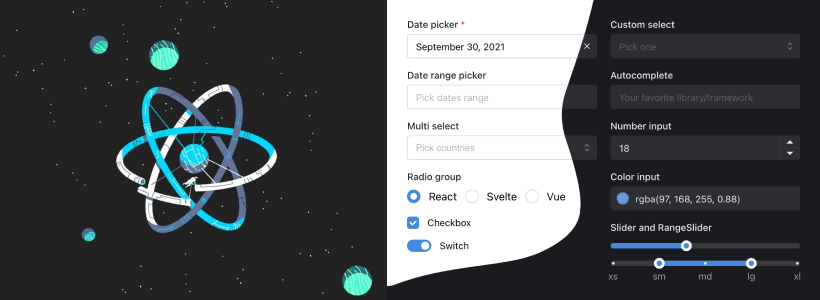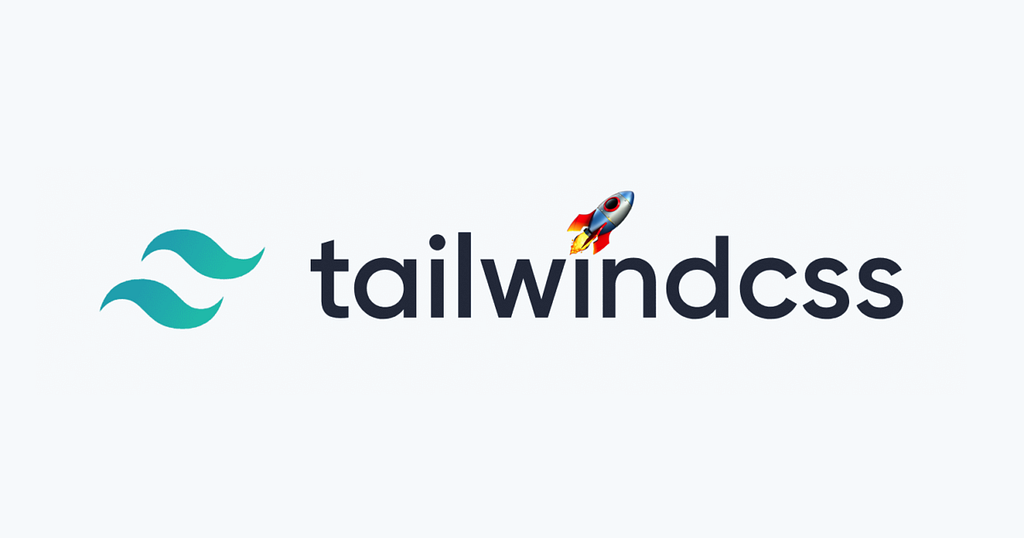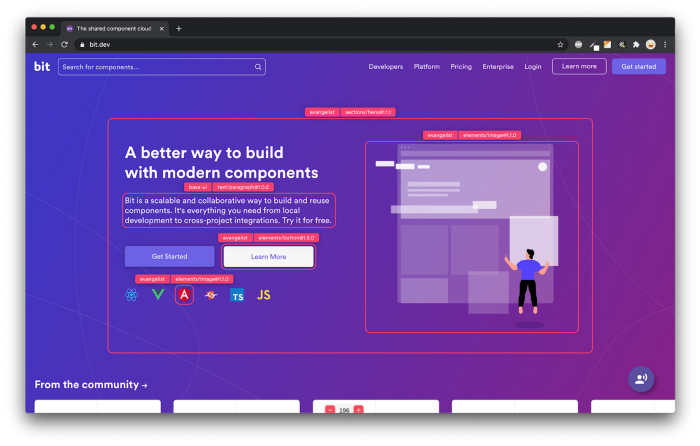This content originally appeared on Bits and Pieces - Medium and was authored by FardaKarimov

The creation of user interfaces is a common application of React, a well-known JavaScript library. While React provides powerful tools for building components and managing state, it does not come with built-in support for styling. As a result, developers must choose a styling framework to use with React.
There are many styling frameworks available for React, each with its own strengths and weaknesses. Here are some of the best options:
1. CSS-in-JS
CSS-in-JS is a popular approach to styling in React that involves writing CSS code directly in your JavaScript files. This allows you to define styles for your components in a more modular way, and can also improve the performance of your application by reducing the number of HTTP requests required to load CSS files.
Pros:
- Modularity: With CSS-in-JS, you can define styles for each component in a modular way, making it easier to maintain and debug your code.
- Performance: By eliminating the need to load separate CSS files, CSS-in-JS can help improve the performance of your application.
- Theming: Some CSS-in-JS libraries include powerful theming systems that allow you to customize the styling of your application with ease.
Cons:
- Learning curve: If you’re not already familiar with CSS-in-JS, there may be a learning curve associated with getting started.
- Tooling: Depending on the library you choose, you may need to set up additional tooling to get the most out of CSS-in-JS.
There are many libraries available for implementing CSS-in-JS in React, including:
Styled Components: Styled Components is a popular CSS-in-JS library that allows you to define styles for your components using tagged template literals. It has a simple and intuitive API, and supports server-side rendering and theming. Styled Components also provides great developer experience, as it offers a robust set of debugging tools and allows you to easily override styles for your components.
Emotion: Emotion is another popular CSS-in-JS library that supports server-side rendering, theming, and style composition. It offers a powerful API for defining styles, with support for various CSS features such as media queries, keyframes, and global styles. Emotion also provides great performance, as it generates styles dynamically and eliminates unused styles.
CSS Modules: CSS Modules is an approach to styling in which CSS files are locally scoped to a specific component or module. This allows you to define styles in a more modular way and avoid naming conflicts. CSS Modules can be used with any CSS preprocessor or even plain CSS and integrates easily with React.

2. Bootstrap
Bootstrap is a popular CSS framework that provides a set of pre-built UI components, such as buttons, forms, and navigation menus, that can be used to quickly build responsive web pages. While Bootstrap is not designed specifically for use with React, it can be easily integrated into React projects using libraries such as react-bootstrap or reactstrap.
Pros:
- Pre-built components: Bootstrap provides a set of pre-built components that can be used to rapidly build responsive web pages.
- Community: Bootstrap has a large and active community of developers, which means you can find plenty of resources and support if you run into issues.
Cons:
- Overhead: Because Bootstrap provides a large number of components, it can be overkill for some projects, leading to slower load times and a larger bundle size.
- Customization: While Bootstrap can be customized to fit the needs of your application, doing so can be time-consuming and may require significant CSS expertise.

3. Material-UI
Material-UI is a popular UI library for React that provides a set of pre-built React components based on Google’s Material Design guidelines. Material-UI components can be used to build modern, responsive web applications with a consistent look and feel. The library also includes a powerful theme system that allows you to easily customize the styling of your application.
Pros:
- Consistency: Because Material-UI components are based on Google’s Material Design guidelines, they provide a consistent look and feel that can improve the user experience.
- Theming: Material-UI includes a powerful theming system that allows you to easily customize the styling of your application.
Cons:
- Complexity: Material-UI includes a large number of components, which can make it more complex to use than some other options.
- Styling: Because Material-UI components are highly stylized, it can be more difficult to customize their appearance to fit the needs of your application.

4. Semantic UI
Semantic UI is another popular CSS framework that provides a set of pre-built UI components for building responsive web pages. Semantic UI is designed to be highly modular and customizable, allowing you to easily modify the styling of individual components to fit the needs of your application.
Pros:
- Customization: Semantic UI is designed to be highly customizable, making it easy to modify the styling of individual components to fit the needs of your application.
- Consistency: Like Material UI, Semantic UI provides a consistent look and feel that can improve the user experience.
Cons:
- Overhead: Like Bootstrap, Semantic UI provides a large number of components, which can lead to slower load times and a larger bundle size.
- Community: While Semantic UI has a strong community, it is not as large as some other options, which means there may be fewer resources and support available.

5. Tailwind CSS
Tailwind CSS is a popular utility-first CSS framework that provides a set of pre-built classes for styling HTML elements. Tailwind CSS is highly customizable and can be used to rapidly build responsive web pages with minimal CSS code. While Tailwind CSS is not designed specifically for use with React, it can be easily integrated into React projects using libraries such as tailwindcss-styled-components.
Pros:
- Customization: Tailwind CSS is highly customizable, making it easy to modify the styling of individual elements.
- Utility-first: The utility-first approach of Tailwind CSS can help you rapidly build responsive web pages with minimal CSS code.
Cons:
- Complexity: Depending on the level of customization you require, Tailwind CSS can be more complex to use than some other options.
- Overhead: Like Bootstrap and Semantic UI, Tailwind CSS provides a large number of pre-built classes, which can increase the size of your application bundle.
Conclusion
Choosing the right styling framework for your React.js application is an important decision that can have a significant impact on the development experience and performance of your application. By considering the strengths and weaknesses of each framework and selecting the one that best fits the needs of your project, you can build beautiful, responsive web applications with ease.
💡 Note: No matter which framework you’re using, you can use a tool like Bit to use and reuse your UI components (your own, or something from a UI library that you’ve wrapped with your own) across multiple projects, thereby maintaining a highly composable and easy-to-scale UI.
Find out more here:
Building a Composable UI Component Library
Build React Apps with reusable components, just like Lego

Bit’s open-source tool help 250,000+ devs to build apps with components.
Turn any UI, feature, or page into a reusable component — and share it across your applications. It’s easier to collaborate and build faster.
Split apps into components to make app development easier, and enjoy the best experience for the workflows you want:
→ Micro-Frontends
→ Design System
→ Code-Sharing and reuse
→ Monorepo
Learn more
- Creating a Developer Website with Bit components
- How We Build Micro Frontends
- How we Build a Component Design System
- How to reuse React components across your projects
- 5 Ways to Build a React Monorepo
- How to Create a Composable React App with Bit
Best React UI Frameworks in 2023 was originally published in Bits and Pieces on Medium, where people are continuing the conversation by highlighting and responding to this story.
This content originally appeared on Bits and Pieces - Medium and was authored by FardaKarimov
FardaKarimov | Sciencx (2023-03-29T11:49:58+00:00) Best React UI Frameworks in 2023. Retrieved from https://www.scien.cx/2023/03/29/best-react-ui-frameworks-in-2023/
Please log in to upload a file.
There are no updates yet.
Click the Upload button above to add an update.
